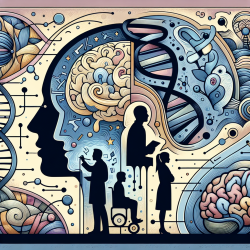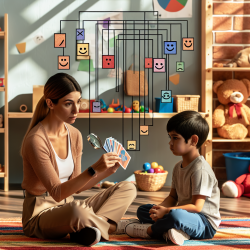As a speech-language pathologist, it's crucial to stay abreast of the latest research and technological advancements that can enhance therapeutic outcomes for children. One emerging area of interest is the use of social robots in mental health care. A recent scoping review titled "Social Robot Interventions in Mental Health Care and Their Outcomes, Barriers, and Facilitators" provides valuable insights that can help practitioners like us to improve our skills and services.
Understanding Social Robots and Their Potential
Social robots, also known as socially assistive robots (SARs), are designed to interact with humans through social behaviors. These robots can provide companionship, reduce feelings of loneliness, and even assist in therapeutic interventions. The review highlights various studies where social robots were used to engage children with autism spectrum disorder (ASD), dementia patients, and individuals with other mental health conditions.
Key Findings from the Review
The review identified several positive outcomes associated with the use of social robots in mental health care:
- Improved Engagement: Social robots were found to increase engagement levels among participants, particularly children with ASD.
- Enhanced Social Interaction: The presence of social robots facilitated better social interactions among participants, caregivers, and family members.
- Reduced Agitation and Anxiety: Participants exhibited lower levels of agitation and anxiety, contributing to an overall improvement in their emotional state.
- Better Quality of Life: The use of social robots was linked to improvements in participants' quality of life, including reduced loneliness and enhanced mood.
Barriers to Implementation
While the outcomes are promising, the review also identified several barriers to the successful implementation of social robots:
- Technical Issues: Problems such as connection instability, difficulty in operating the robot, and limited functionality were common.
- Organizational Challenges: Lack of adequate space, storage, and hygiene measures were significant barriers in many settings.
- Staff Resistance: Some staff members were resistant to the idea of integrating social robots into their routine, fearing job replacement or increased workload.
Facilitators for Successful Implementation
On the flip side, several facilitators can enhance the successful integration of social robots:
- Training and Familiarization: Providing adequate training and familiarization sessions for staff and participants can significantly improve acceptance and effectiveness.
- Customization: Tailoring the robot's functions to meet the specific needs of participants can enhance engagement and therapeutic outcomes.
- Positive Perception: Witnessing the positive impacts of social robots can change the attitudes of skeptical staff members and caregivers.
Practical Implications for Practitioners
As practitioners, it's essential to consider both the benefits and challenges of integrating social robots into our therapeutic interventions. Here are some practical steps to take:
- Stay Informed: Keep up with the latest research and advancements in social robot technology.
- Advocate for Training: Ensure that all staff members receive proper training and support to effectively use social robots.
- Customize Interventions: Tailor the robot's functionalities to meet the specific needs of each child, enhancing engagement and outcomes.
- Monitor and Evaluate: Continuously monitor the effectiveness of social robot interventions and make data-driven adjustments as needed.
To read the original research paper, please follow this link: Social Robot Interventions in Mental Health Care and Their Outcomes, Barriers, and Facilitators: Scoping Review










